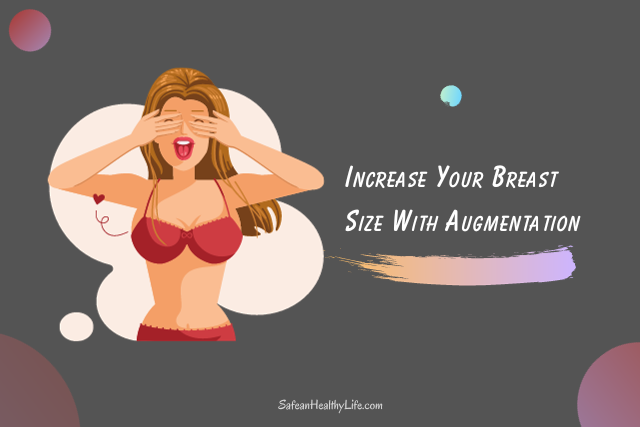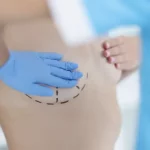
You may like also:
- Combining Augmentation With Breast Reduction: Is it Possible?
- 12 Things You Should Know Before Breast Augmentation
- 5 Recovery Tips to Achieve Optimal Results after Breast Augmentation
If you’ve chosen breast augmentation, you’ll be joining the group of women who’ve made this the most popular cosmetic surgery nationwide.
Women choose breast augmentation for many reasons, and no two women’s surgeries are the same.
Breast augmentation surgery enlarges breasts to correct breast asymmetry or repair breast deformities due to medical conditions.
Additional reasons for breast augmentation include:
- Restoring fullness to a woman’s breasts after a pregnancy and breastfeeding
- Enlarging breasts to balance body shape composition
- Correcting breast shape affected by weight loss or age
- Enhancing self-image
- Restoring confidence for women with unusually small breasts
Whatever the reason, breast augmentation offers personalized implant options for breast augmentation surgery, such as the incision location, type of breast augmentation, and a choice of implant types.
Are You a Candidate for Breast Augmentation?
Breast augmentation is a very personal choice, and you’ll need to work with your plastic surgeon to determine if you’re a candidate.
Things to keep in mind when determining if breast augmentation surgery is right for you include:
- The state of your physical health
- You’re not currently pregnant or breastfeeding
- You’re of an age where your breasts are completely developed
- You can tolerate and have no adverse reactions to local or general anesthesia
- You’ve discussed your expectations with your plastic surgeon
Statistics report a high satisfaction rate among women who undergo breast augmentation. Many reported improved physical appearance, although psychological well-being rated even higher.
Types of Breast Augmentation Surgery

There are two types of breast augmentation surgery: implants and fat transfer. The choice between the two involves a woman’s preferences and her desired outcome.
Fat Transfer Breast Augmentation
Fat transfer breast augmentation involves removing fat from one part of the patient’s body and infusing it into the breasts.
Plastic surgeons use liposuction to take fat from the stomach, thighs, hips, arms, or back and inject it directly into the patient’s breasts. The fat remains in the breasts permanently, and this option offers fewer risks than implant surgery.
However, fat transfer only provides a slight enlargement of the breasts and doesn’t create firmness.
Implant Breast Augmentation Surgery
Implant surgery involves a plastic surgeon making an incision to create a pocket in the breast area and then inserting an implant.
The location of the incision includes under the breast where it meets the chest wall, along the lower part of the areola or nipple, under the arm, or in the navel.
Implants are filled with silicone or saline. Silicone implants have a silicone outer lining and are filled with silicone gel. Saline implants also have a silicone lining but come empty, allowing a smaller incision as the sterile saltwater solution is added after insertion.
How Is Breast Augmentation Surgery Performed?
Breast augmentation surgery is typically an outpatient surgery. Sometimes, a local anesthetic is used around the breast area, but general anesthesia is more common.
Once complete, you will need a few hours to recover from the effects of the anesthesia, and then you can return home.
Most plastic surgeons suggest no strenuous exercise for two to four weeks and may ask you to wear a surgical bra for support.
Breast Augmentation Questions and Answers
Q. Is breast augmentation surgery painful?
A. If your implants are placed over the muscle in the breast, there is minimal pain, and recovery is faster. If implants are placed under the muscle, there can be more pain due to the muscle being stretched. Your surgeon may prescribe a muscle relaxer. The pain usually subsides in a day or so, and over-the-counter pain medications will help if it lingers.
Q. Will I have large, visible scars?
A. Incisions are small – usually only an inch to two inches long. They’re typically located where they will only be visible if you’re bathing or are undressed. Incisions made on the navel are virtually invisible.
Q. Is breast augmentation surgery safe?
A. The majority of people having breast augmentation surgery have no serious complications. However, there are some risks that should be discussed with your plastic surgeon prior to surgery.
Q. How long will my breasts keep their shape?
A. Several factors may affect breast implants, including menopause, pregnancy, or weight loss. The average lifecycle of breast implants is 10 to 20 years.
Q. How will I know if my implants are leaking or ruptured?
A. If an implant leaks or ruptures, it may change the size and shape of the breast and cause minor pain. You may also notice swelling, lumps, or hardening. Sometimes, a ruptured implant may go unnoticed if the silicone or saline solution is trapped in the breast tissue. After breast augmentation surgery, routine screenings are necessary to catch any problems as soon as possible.
About The Author:
Ann Lewis enjoys the art of writing and has experience in various spheres of the craft. By blending information, with advice and impromptu jokes, she writes articles that not only have something to teach but are also light, and easy to read.




